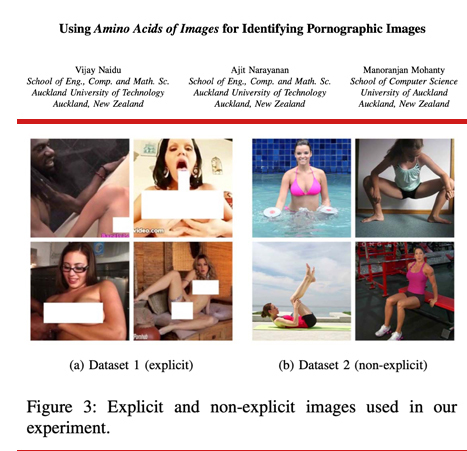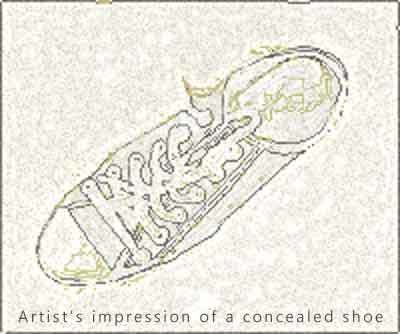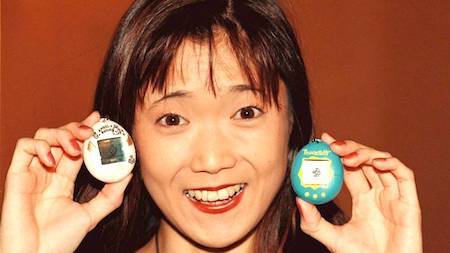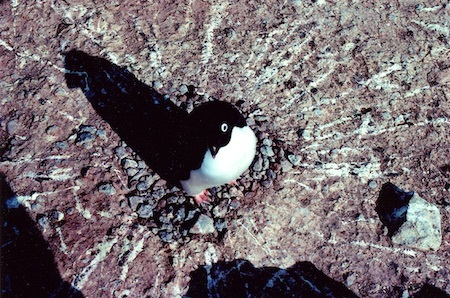Marc Abrahams's Blog, page 148
May 18, 2019
“How Scientists Stumble on Their Adventures”
Hauwei Europe produced this three-minute animated introduction to some Ig Nobel Prize winners. (The animation includes small bits of fanciful over-explanation, which you might enjoy trying to tease out from the facts):

May 17, 2019
Using Amino Acids to Identify Pornographic Images
This study pioneers the use of amino acids for identifying pornographic images:
“Using Amino Acids of Images for Identifying Pornographic Images,” Vijay Naidu, Ajit Narayanan, and Manoranjan Mohanty, 2019 IEEE Conference on Multimedia Information Processing and Retrieval (MIPR), 2019. 
The authors, at Auckland University of Technology and the University of Aukland, New Zealand, report:
The pornographic images need to be regulated as they can have an adverse effect on the society. This paper purposes an image amino acid-based method to identify a pornographic image. The proposed method works by converting an image into biological amino acid form (e.g., to A, C, D, G, H, etc. form) and then extracting a signature from the image (which is represented in amino acid form) using biological tools. Using this method, a number of signatures are obtained from a set of few known pornographic images. These signatures are then matched against a database of images to find out the pornographic images. The matching is done using the openly available anti-virus scanner Clamscan. Here, the signatures obtained from the pornographic images are represented as signatures of viruses. The experimental result shows that the proposed method can identify a pornographic image with a high detection rate.
Many biologists who view themselves as being experts in the study of amino acids. This up and coming application of amino acids to pornographic images may be surprising to them.

May 16, 2019
Serial killers and the Permian–Triassic boundary mass extinction
Mikhail Simkin writes about his discovery of a discovery:
I got a request from Journal of Psychology & Psychotherapy to review the paper “Serial Killers Profiling and Target Victims: Is there a connection?” The article looked pretty banal until I got to chapter 2.1 where I read:
“Biologically speaking, Heydari et al. (2008) observed the most common biological characteristics of serial killers and noted that they have distinctive features like; face asymmetry, irregular ears sizes, either standing out or very small, irregular nose shape, and protruding lips.”
This was intriguing so I scrolled to the end of the article for the reference. It was:
Heydari, E., Arzani, N., & Hassanzadeh, J. (2008). Mantle plume: the invisible serial killer— application to the Permian–Triassic boundary mass extinction. Palaeogeography, Palaeoclimatology, Palaeoecology, 264(1), 147-162….

Recent progress in mermaid (and merfolk) studies
Mermaids (and, more recently merfolk) have been the subject of examination in a number of scholarly studies. Here are a few examples from the last 5 years (or so).
● ARE MERMAIDS REAL? Rhetorical Discourses and the Science of Merfolk.in Shima, Volume 12 Number 2 2018
● Swimming with mermaids: Communication and social density in the Second Life merfolk community in Computers in Human Behavior, Volume 48, July 2015, Pages 226-235
● How the Naturalists Described Merfolk or Mermaids: Fishes, Women, and Mammalia in Hikaku Bungaku Journal of Comparative Literature
● How fast could a mermaid swim? in the Journal of Interdisciplinary Science Topics, Volume 7, 2018
● Bodies and technologies: Becoming a ‘mermaid’: myth, reality, embodiment, cyborgs, windsurfing and the sea in Living with the Sea, Knowledge, Awareness and Action, 2018 – Taylor & Francis
● Scaled for Success: The Internationalisation of the Mermaid in Western Folklore; Chico Vol. 78, Iss. 1, (Winter 2019):
Research research : Martin Gardiner
Photo credit : Miss ‘Definitely’ Downtown. A Norfolk mermaid.
Photographer: Captain Albert E. Theberge
Affiliation: NOAA Corps (ret.)
Date: 2003 June
Location: Virginia, Norfolk
Subject: Coastline
Subject: Mid-Atlantic Virginia
Subject: Art

May 15, 2019
Speaking of the Blob
Audrey Dussutour is speaking about the blob:
Blobs on the Mind
Lots of other people are speaking about the blob, too—about the blob and intelligence. The blob is also known as “slime mold.” Intelligence is known to make people curious.
Lots of this talking was inspired by the work of Toshiyuki Nakagaki and his colleagues, who been honored with two Ig Nobel Prizes.
The Two Slime Mold Ig Nobel Prizes
The 2008 Ig Nobel Prize for cognition was awarded to Toshiyuki Nakagaki of Hokkaido University, Japan, Hiroyasu Yamada of Nagoya, Japan, Ryo Kobayashi of Hiroshima University, Atsushi Tero of Presto JST, Akio Ishiguro of Tohoku University, and Ágotá Tóth of the University of Szeged, Hungary, for discovering that slime molds can solve puzzles.
The 2010 Ig Nobel Prize for transportation was awarded to Toshiyuki Nakagaki, Atsushi Tero, Seiji Takagi, Tetsu Saigusa, Kentaro Ito, Kenji Yumiki, Ryo Kobayashi of Japan, and Dan Bebber, Mark Fricker of the UK, for using slime mold to determine the optimal routes for railroad tracks.
For details of those Ig Nobel Prize winning experiments see:
“Rules for Biologically Inspired Adaptive Network Design,” Atsushi Tero, Seiji Takagi, Tetsu Saigusa, Kentaro Ito, Dan P. Bebber, Mark D. Fricker, Kenji Yumiki, Ryo Kobayashi, Toshiyuki Nakagaki, Science, Vol. 327. no. 5964, January 22, 2010, pp. 439-42. [VIDEO]
REFERENCE: “Intelligence: Maze-Solving by an Amoeboid Organism,” Toshiyuki Nakagaki, Hiroyasu Yamada, and Ágota Tóth, Nature, vol. 407, September 2000, p. 470. [VIDEO]

May 14, 2019
Attractive People More Likely to Believe the World is Fair?
A further attempt to define and understand the difference between attractive people and people who are not attractive:
 “The Influence of Physical Attractiveness on Belief in a Just World,” R. Shane Westfall, Murray G. Millar, and Aileen Lovitt [pictured here], Psychological Reports, epub 2019. The authors, at the University of Nevada, Las Vegas, explain:
“The Influence of Physical Attractiveness on Belief in a Just World,” R. Shane Westfall, Murray G. Millar, and Aileen Lovitt [pictured here], Psychological Reports, epub 2019. The authors, at the University of Nevada, Las Vegas, explain:
“We hypothesized that physically attractive individuals would be stronger endorsers of belief in a just world, whereas less attractive individuals would be less likely to endorse belief in a just world. Both self-rated attractiveness (experiment one) and attractiveness rated by other persons (experiment two) were found to predict endorsement of belief in a just world.”

May 13, 2019
The Triumphal Return of Tiny (Ig Nobel Prize-winning) Tamagotchi
Bandai America is bringing the nostalgia-infused virtual pet craze of “Tamagotchi” to a 21st century audience with “Tamagotchi On,” a revamped take on the keychain-sized plastic egg toy that launches May 13.
So reports Variety, the show business newspaper, which goes on to give some historical context:
Tamagotchi was originally invented by Bandai’s Aki Maita. She later won the 1997 Ig Nobel Prize in economics for its creation.
The 1997 Ig Nobel Prize for economics was awarded to Akihiro Yokoi of Wiz Company in Chiba, Japan and Aki Maita of Bandai Company in Tokyo, the father and mother of Tamagotchi, for diverting millions of person-hours of work into the husbandry of virtual pets.

Shoe concealments of yore – a recent study
 Builders and archaeologists sometimes comes across old shoes (usually just one of a pair*) which have been deliberately hidden in inaccessible places in the fabric of old buildings. Under floorboards, behind bricked-up fireplaces etc etc. But why were they put there? A number of scholars have provided possible answers . . . The most recent academic paper being from Dr Ceri Houlbrook (University of Hertfordshire, United Kingdom) and Rebecca Shawcross (Senior shoe curator at the Northamptonshire Museum & Art Gallery, UK). It’s published in Material Religion : The Journal of Objects, Art and Belief, Volume 14, 2018 – Issue 2. See: ‘Revealing the Ritually Concealed: Custodians, Conservators, and the Concealed Shoe’ [24 hours to view or download: £32.00]
Builders and archaeologists sometimes comes across old shoes (usually just one of a pair*) which have been deliberately hidden in inaccessible places in the fabric of old buildings. Under floorboards, behind bricked-up fireplaces etc etc. But why were they put there? A number of scholars have provided possible answers . . . The most recent academic paper being from Dr Ceri Houlbrook (University of Hertfordshire, United Kingdom) and Rebecca Shawcross (Senior shoe curator at the Northamptonshire Museum & Art Gallery, UK). It’s published in Material Religion : The Journal of Objects, Art and Belief, Volume 14, 2018 – Issue 2. See: ‘Revealing the Ritually Concealed: Custodians, Conservators, and the Concealed Shoe’ [24 hours to view or download: £32.00]
“Concealed shoes are footwear purposely concealed within domestic buildings. The motivations behind their concealments are unknown to us, but the prominent theory suggests that shoes were employed as apotropaic (evil-averting) devices.”
So could it be, for example, that the footwear-hiders thought that the shoes could act as ‘Lightning Conductors’ to distract malevolent supernatural threats? Such that a malign demon or spirit might think that a shoe is a member of the household, and so mistakenly attack it – subsequently getting trapped inside it?
That’s bearing in mind that it in the past it was widely believed that “evil spirits, fairies, and demons did not like the smell of leather” Ref: MacCulloch, John A. 1910. “Changelings.” In Encyclopaedia of Religion and Ethics 3, edited by James Hastings, Louis H. Gray and John A. Selbie, 358–363. Edinburgh: T. & T. Clark. )
* Further reading: A full access paper in which Dr Ceri Houlbrook explores possible reasons why the shoes tend to found one at a time.
“Drawing on a sample of 100 examples, this paper questions why such shoes were deposited as singles (the present parts), what became of the ‘other shoe’ (the absent part), and how such consideration aids our understanding of this enigmatic custom.”
‘The Other Shoe: Fragmentation in the PostMedieval Home’,
Cambridge Archaeological Journal, Vol. 27 (2): 261-274, December 2016.
Research research by Martin Gardiner

May 12, 2019
Of Grizzly Bears, and Grizzly Bears, and Grizzly Bears, and People
Insights about grizzly bears and some humans who spend time with grizzly bears:
“Grizzlies in the Backyard“, by Margaret Munro, in the New York Times)
“A suit of armour is a bear necessity”, about Troy Hurtubise, in The Guardian)
The Yet Still Further Continuing Adventures of Troy (Chapter 310): “…Though some people think Troy is a damn fool, at least two dead men — Timothy Treadwell and Vitaly Nikolayenko — might still be alive today if only they had heeded Troy’s lessons.”
But, alas, we must remind you that Troy’s adventures have come to an end: “Exit, pursuing a bear: Farewell Troy Hurtubise“. Here is the documentary film “Project Grizzly”, about the early part of Troy’s grizzly career, produced by the National Film Board of Canada:

May 10, 2019
Why he calculated the internal poo pressure of a penguin
Victor Benno Meyer-Rochow tells why he and his colleagues calculated the internal pressure of a penguin. He then confides that there remain questions worth answering:
…The pressing question had been that of the pressure of course, but what still puzzles me is why the streaks were found all around the nest and not just in one direction? Did the penguins choose the direction into which they lifted their tail or did the end result depend on the direction of the wind? I don’t know the answer and perhaps we need a second Jamaica Antarctic Expedition to find out. What I do know is that, compared with seed eaters, the meat and fish-eating birds expel heir faeces with greater force, because their wastes contain higher amounts of uric acid, which is corrosive and irritating: watch an eagle you visit a zoo the next time. But take care where you stand: like penguins these birds can bite – and shoot, from the rear and below the belt!
The 2005 Ig Nobel Prize for fluid dynamics was awarded to Victor Benno Meyer-Rochow of International University Bremen, Germany and the University of Oulu, Finland; and Jozsef Gal of Loránd Eötvös University, Hungary, for using basic principles of physics to calculate the pressure that builds up inside a penguin, as detailed in their report “Pressures Produced When Penguins Pooh — Calculations on Avian Defaecation.”

Marc Abrahams's Blog
- Marc Abrahams's profile
- 14 followers







